Appreciate the beauty of gemstones as we explore the fascinating comparison of blue topaz vs aquamarine. This insightful guide provides valuable information to help you choose the perfect stone, whether for jewelry collection or a meaningful gift.
Understanding the Composition of Blue Topaz and Aquamarine
When delving into the realm of gemstones, understanding their composition is crucial in comprehending their unique characteristics. Both blue topaz and aquamarine are striking, yet they come from different mineral families, which influences their properties and applications.
The Fundamental Mineral Makeup of Both Gemstones
Blue topaz is primarily composed of aluminum silicate fluoride, which contributes to its vibrant coloration and clarity. This unique mineral composition allows blue topaz to be cut into a variety of shapes without losing any of its brilliant appearance.
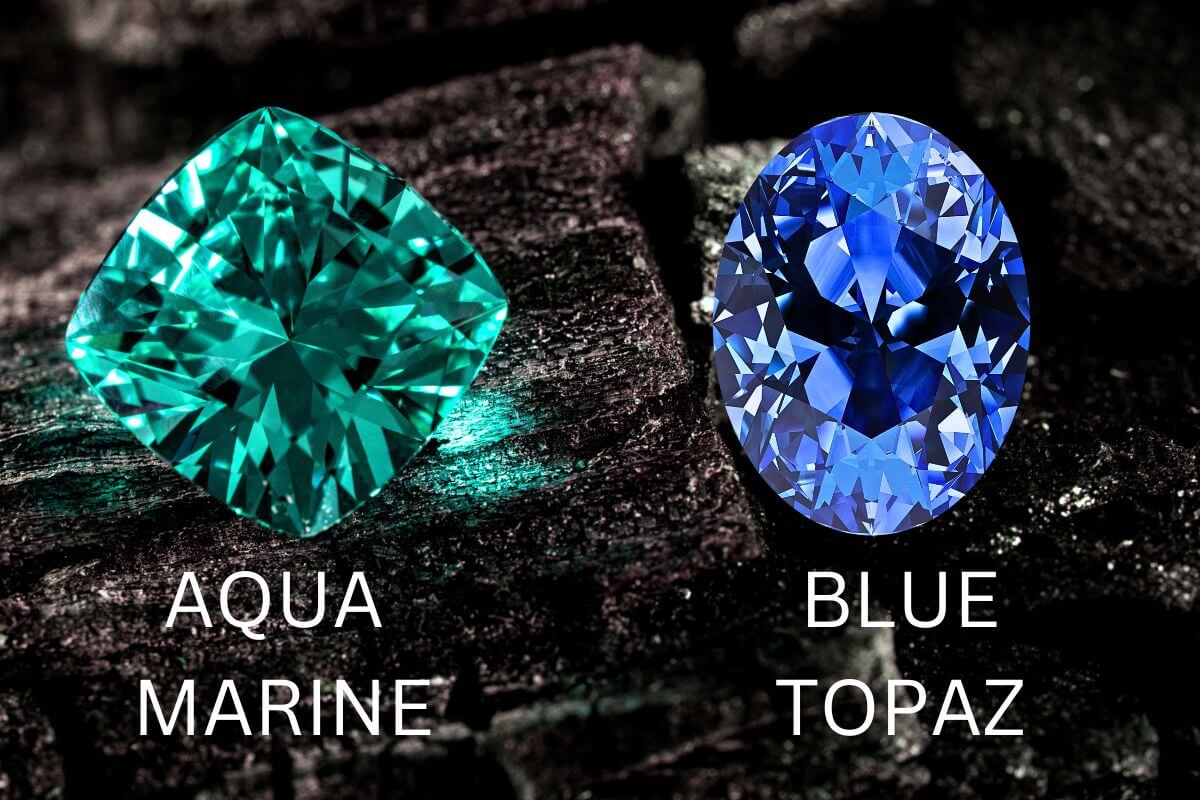
Aquamarine, on the other hand, belongs to the beryl family and is rich in beryllium aluminum silicate. This composition not only lends itself to the gemstone’s serene look but also affects how it interacts with light, creating a different aesthetic experience compared to blue topaz.
How Composition Affects Their Uses and Applications
The differing mineral compositions of blue topaz and aquamarine lead to various applications in the jewelry industry. Blue topaz, with its more stable structure, is often used in everyday jewelry, while aquamarine is frequently incorporated into high-end pieces due to its luxurious appeal.
Additionally, the makeup influences how these gems withstand wear over time. As a result, the choice between blue topaz and aquamarine often comes down to lifestyle and intended use in jewelry.
Aesthetic Differences Between Blue Topaz and Aquamarine
The visual appeal of gemstones plays a significant role in their desirability. Both blue topaz and aquamarine capture attention, yet they do so in distinct ways, helping individuals express their personal style through jewelry.
Visual Characteristics and Their Impact on Jewelry Design
While both gemstones are known for their eye-catching hues, blue topaz offers a vivid and striking color that makes it a popular choice for statement pieces. Its clarity and brilliance allow artisans to showcase intricate designs, enhancing the drama of the jewelry.
In contrast, aquamarine presents a more subtle and tranquil appearance, often embodied in delicate settings. This quality makes aquamarine particularly popular for timeless pieces, such as engagement rings, where elegance is paramount.
Matching Styles and Personal Preferences
When selecting between blue topaz and aquamarine, consider how each stone aligns with your personal aesthetic. Blue topaz is well-suited for bold, modern designs, while aquamarine pairs beautifully with vintage aesthetics or minimalist styles.

The choice often reflects not just personal taste, but also the message one wishes to convey through their jewelry. Therefore, understanding these differences can influence a buyer’s decision-making process significantly.
Assessing the Durability of Blue Topaz and Aquamarine
Durability is an essential factor when choosing gemstones for jewelry, as it directly impacts their longevity and maintenance needs. Both blue topaz and aquamarine offer different levels of resilience.
Evaluating the Resilience of Each Gemstone
Blue topaz is known for its durability, rated higher on the scale that determines how well it withstands scratches and impacts. This makes it an excellent choice for daily wear, as it maintains its beauty over time with little wear and tear.
Conversely, aquamarine, while still durable, requires a bit more care. It can be prone to chipping if subjected to repeated impacts. Understanding these durability nuances can aid customers in making informed choices based on their lifestyle.
Maintenance Considerations for Each Gemstone
Ensuring the longevity of blue topaz requires basic care, such as regular cleaning with a soft cloth and avoiding harsh chemicals. In contrast, aquamarine may need more gentle maintenance, including the avoidance of harsh cleaning agents.
Proper maintenance strategies for both stones help preserve their beauty and enhance their lifespan. Being aware of these considerations ensures customers maximize their investments in fine jewelry.

Price Trends of Blue Topaz and Aquamarine in the Market
The market price of gemstones varies based on several factors, including rarity, demand, and overall quality. Understanding these price trends helps consumers make informed purchasing decisions.
Factors Influencing Pricing for Each Gemstone
Blue topaz is generally more affordable due to its abundance, making it accessible for a wider audience. Its price can fluctuate based on color intensity and cut, but it remains relatively cost-effective among fine gemstones.
Aquamarine tends to have a higher price point, primarily due to its less common nature and the demand for its unique aesthetic. This rarity drives prices, especially for high-quality stones that showcase exceptional clarity and saturation.
Budgeting for Acquisitions of Both Gemstones
When planning to purchase either gemstone, it’s wise to set a clear budget. Since blue topaz is usually more economical, purchasers can invest in larger pieces or more intricate settings without breaking the bank.
In contrast, investing in aquamarine may involve prioritizing quality over size. Understanding these trends allows consumers to find the best value for their preferences and requirements.
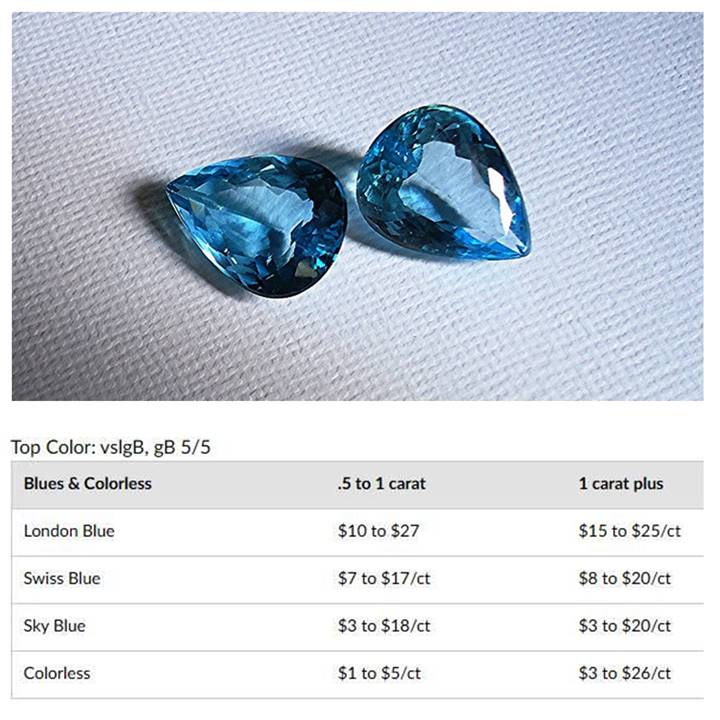
The Allergen Considerations for Wearers of Blue Topaz and Aquamarine Jewelry
When selecting jewelry, it’s essential to consider potential allergies, particularly for individuals with sensitive skin. Understanding how blue topaz and aquamarine can influence these factors is important.
Potential Allergens Related to Jewelry Settings
While both blue topaz and aquamarine are not allergens themselves, the materials used in their settings can pose a risk for sensitive wearers. Metals like nickel, often used in jewelry, can trigger allergic reactions in some individuals.

It is crucial for consumers to inquire about the metal composition when purchasing jewelry featuring these gemstones. This awareness ensures a comfortable wearing experience without any adverse effects.
Recommended Practices for Sensitive Skin
For individuals concerned about allergens, opting for hypoallergenic metal options, such as platinum or titanium, is advisable when choosing jewelry. Additionally, regular cleaning of jewelry can help prevent build-up of irritants that could cause discomfort.
By following these guidelines, those who love to adorn themselves with blue topaz and aquamarine can enjoy their selections while minimizing allergy-related concerns.
Popular Uses of Blue Topaz and Aquamarine in Jewelry
The applications of blue topaz and aquamarine extend beyond aesthetics—they have found their place in various types of jewelry, each serving different functions and styles.
Versatile Applications in Jewelry Design
Blue topaz is a favorite for a wide range of jewelry types, from earrings to statement rings, often chosen for its eye-catching appeal. Its versatility allows it to be easily incorporated into modern designs, making it a go-to option for jewelry makers.
Aquamarine, with its serene attributes, is predominantly found in elegant pieces like pendants and fine rings. Its classic beauty makes it popular for uses in special occasions and significant life events, such as weddings or anniversaries.
Emerging Trends and Consumer Preferences
In recent years, there has been a growing trend towards personalized and bespoke jewelry, where both blue topaz and aquamarine are being featured in unique designs tailored to individual tastes. This shift reflects a desire for meaningful pieces that resonate with personal stories.
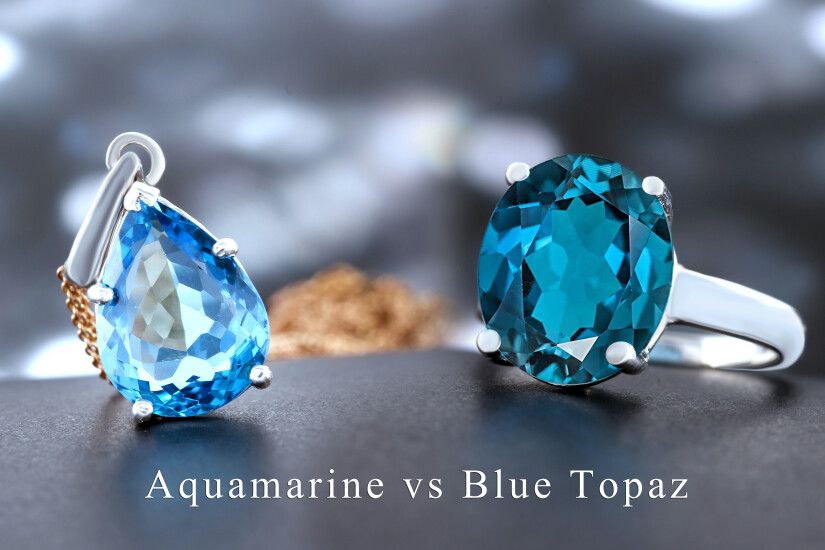
As consumers continue to seek distinctive items that reflect their identity, both gemstones are expected to remain integral in the jewelry landscape, each offering opportunities for creativity and personalization.
The Longevity of Blue Topaz and Aquamarine in the Market
Understanding the longevity of gemstones not only speaks to their durability but also their value in the market over time. Blue topaz and aquamarine have distinct positions concerning longevity.
Anticipating Market Stability
Blue topaz’s wide availability has contributed to its stability in the market. Because it is less likely to fluctuate drastically in price, it continues to be an appealing choice for buyers seeking reliable investment pieces.
Aquamarine, however, holds its value due to its rarity and unique quality. Over time, high-quality aquamarine can become even more valuable, especially if kept in top condition and passed down through generations.

Understanding the Investment Potential
Investing in either gemstone offers unique opportunities. While blue topaz can be considered a good entry-level investment, those purchasing aquamarine often do so with an eye towards long-term value.
By keeping informed about market trends and treating these pieces with care, buyers can ensure their investments not only retain but potentially appreciate in value.
Evaluating the Value for Money of Blue Topaz and Aquamarine
When comparing gemstones in the context of value for money, analyzing various factors is essential. Both blue topaz and aquamarine offer different benefits to their buyers.
Cost-Effectiveness of Blue Topaz
Blue topaz is often heralded as an exceptional value for money. Its affordability allows consumers to purchase eye-catching pieces without compromising on quality or size, making it an attractive option for budget-conscious buyers.
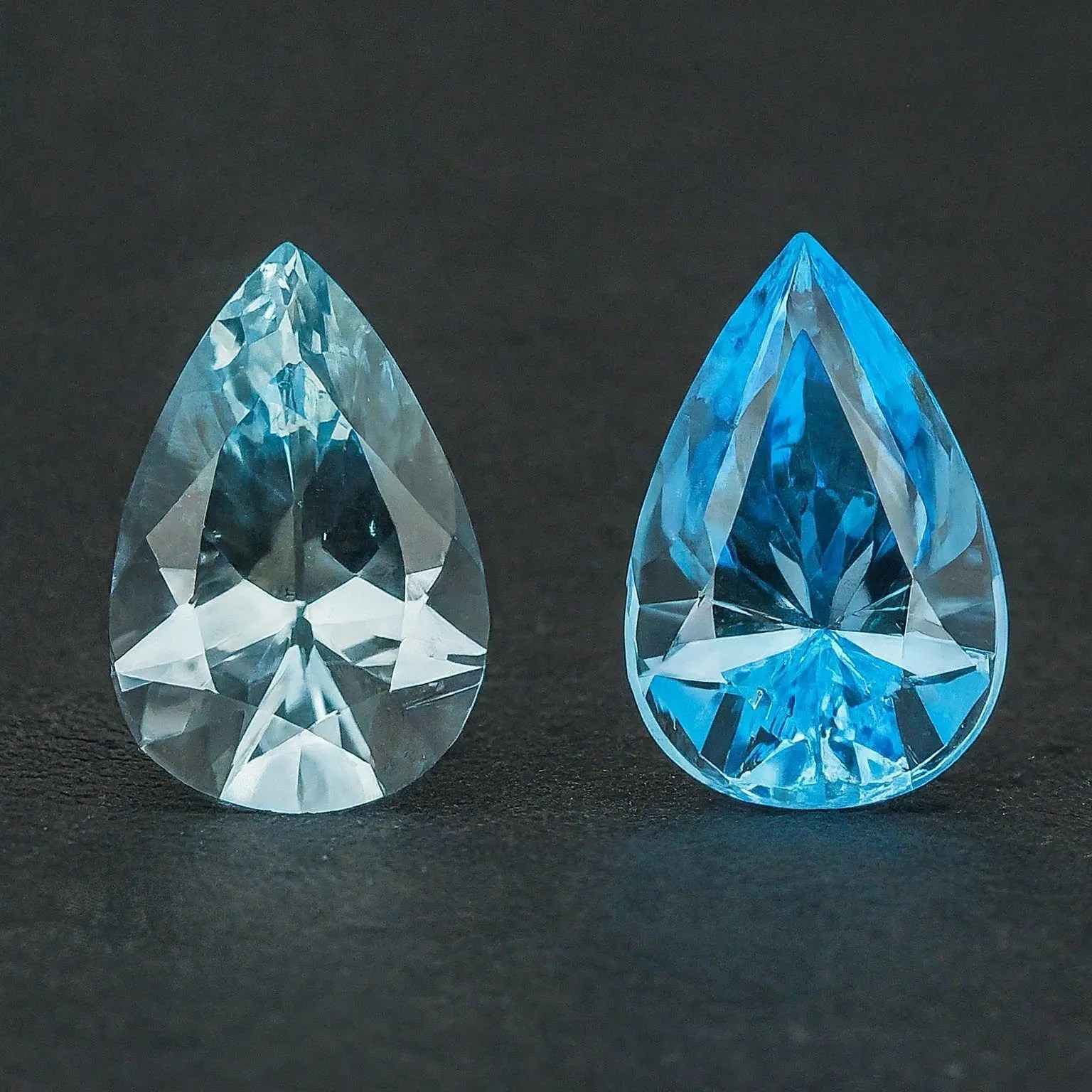
Moreover, the wide availability of blue topaz means that shoppers can find various styles and designs, ensuring that they get precisely what they want without the additional high cost often associated with more sought-after gemstones.
Investment Worthiness of Aquamarine
Aquamarine provides excellent long-term value for money. Despite a higher initial price point, buyers often acquire aquamarine for its beauty and rarity, making it a worthy investment. As the market continues to evolve, well-maintained aquamarine can appreciate significantly, offering greater returns.
The consideration of both immediate costs and potential future value makes aquamarine a compelling choice for discerning collectors and jewelry enthusiasts, especially for those looking to invest in timeless elegance.
Pros and Cons of Choosing Blue Topaz and Aquamarine
When deciding between blue topaz and aquamarine for jewelry, it’s essential to weigh the pros and cons of each gemstone to make an informed decision.
Advantages of Opting for Blue Topaz
One of the main advantages of choosing blue topaz is its affordability. Buyers can enjoy larger stones and more intricate settings at a reasonable price. Additionally, blue topaz’s durability makes it suitable for everyday wear, ensuring longevity.
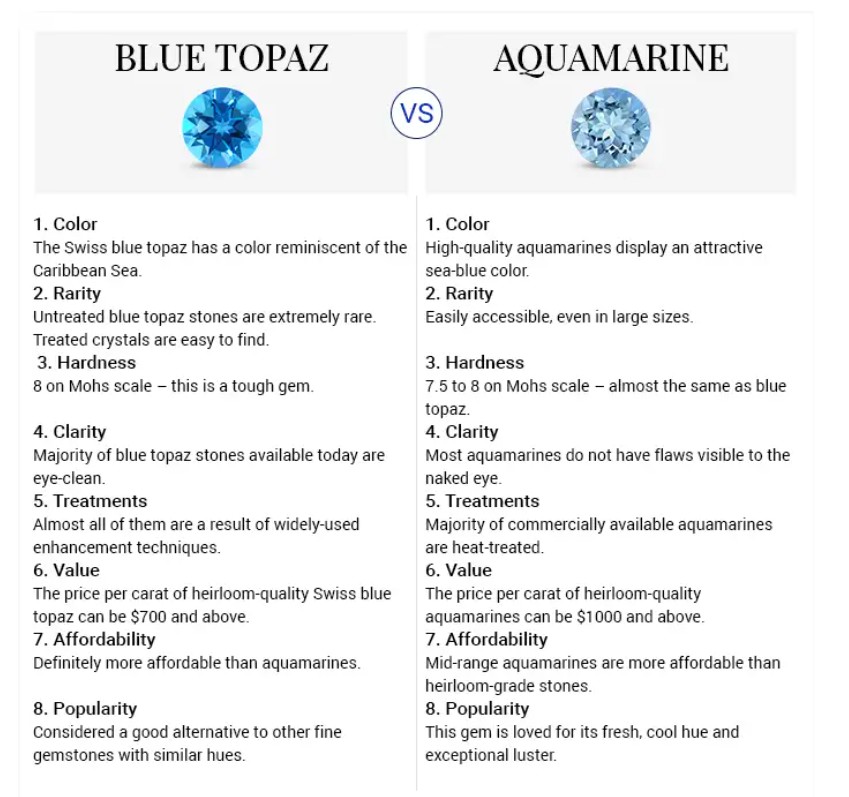
Another benefit is its availability in a variety of settings and styles, catering to diverse tastes. This versatility allows for easy integration into existing jewelry collections or as standalone pieces, making it a popular choice among consumers.
The Allure of Aquamarine Despite Its Challenges
Aquamarine, while more expensive, provides unique visual and emotional appeal that many buyers cherish. Its serene beauty and reputation for sophistication make it a favorite for special occasions or heirloom pieces. The rarity of high-quality aquamarine may also lead to higher resale value.
However, it requires more care to prevent chipping and damage. For consumers prioritizing aesthetic and sentimental value, aquamarine remains an excellent choice despite the maintenance considerations.
Ultimately, understanding the characteristics and implications of blue topaz vs aquamarine will enhance buying decisions, ensuring an appreciation for both gemstones. As preferences and needs vary, the choice largely boils down to personal taste and intended use in jewelry.
Design considerations for blue topaz vs aquamarine reveal their distinct characteristics, ensuring that jewelry enthusiasts can appreciate each gemstone’s unique beauty. By understanding these differences, buyers can make informed choices that best reflect their personal style and collection needs.
